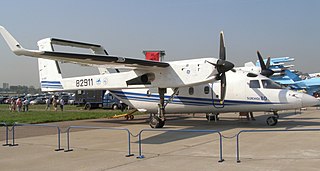
The Sukhoi Su-80 is a Russian twin-turboprop, twin-boom STOL transport aircraft.

The Antonov An-38 is a stretched and upgraded version of Antonov's earlier An-28. It is a twin-engined turboprop transport aircraft, designed by the Antonov Design Bureau in Kyiv, Ukraine. Production is in Novosibirsk, Russia, but some crucial parts are also made in Ukraine and Belarus. It first flew in 1994, and received international flight certification in April 2000. A total of 11 were built and 2 remain in airline service as of August 2019. A recent documentary says that only one remains in service with ALROSA Airlines in 2021.

The Curtiss-Wright X-19, company designation Model 200, is an American experimental tiltrotor aircraft of the early 1960s. It was noteworthy for being the last aircraft of any kind manufactured by Curtiss-Wright.

The Comp Air 7 is an American piston or turboprop-powered light civil utility aircraft manufactured in kit form by Comp Air. It is configured as a conventional high-wing monoplane with tailwheel undercarriage.
The Comp Air 10 is a turboprop-powered light civil utility aircraft manufactured in kit form. Very large for a homebuilt aircraft, it is configured as a mainly conventional high-wing monoplane with either taildragger or tricycle undercarriage. Its close-set twin tails are an unusual design feature for an aircraft in its class, intended to ensure that the aircraft can be parked inside standard-size hangars.

The Comp Air CA12 is a turboprop-powered civil utility aircraft, currently under development. Comp Air is seeking certification. It is configured as a conventional, low-wing monoplane with tricycle undercarriage. The first flight was on April 14, 2007.

The Canadair CL-66 was a turboprop version of the civilian Convair CV-440 Metropolitan. The CC-109 Cosmopolitan or "Cosmo" in RCAF service became the standard VIP aircraft as well as replacing the Douglas Dakota and the North American B-25 Mitchell in light transport duties. After a lengthy career stretching into the 1990s, the CC-109 was replaced by the CC-142 Dash 8 and CC-144 Challenger.

The Beechcraft Model 99 is a civilian aircraft produced by Beechcraft. It is also known as the Beech 99 Airliner and the Commuter 99. The 99 is a twin-engine, unpressurized, 15 to 17 passenger seat turboprop aircraft, derived from the earlier Beechcraft King Air and Queen Air. It uses the wings of the Queen Air, the engines and nacelles of the King Air, and sub-systems from both, with a specifically designed nose structure.

The Beriev Be-30 is a Russian regional airliner and utility transport aircraft designed by the Beriev Design Bureau. It was developed specifically for Aeroflot local service routes using short, grass airstrips. It was also designed to be used in the light transport, aerial survey and air ambulance roles. It competed against the Antonov An-28 and the Czechoslovakian LET-410.
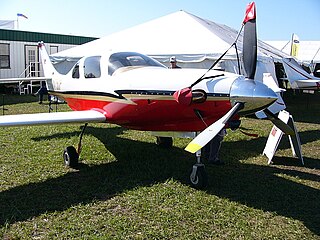
The Lancair Propjet is a four-seat, pressurized, composite aircraft powered by a 750-hp Walter M601E turboprop engine. The aircraft is based on Lancair's successful kit-plane, the Lancair IV. Like its piston-powered predecessor, the Propjet is noted for its performance, with a typical cruise speed of 325 knots at 24,000 feet and a climb performance of 4,000 feet per minute.

The AIDC XC-2 was a prototype civil transport aircraft designed in the 1970s in Taiwan. It was a high-wing monoplane powered by two turboprop engines. The main undercarriage was carried in sponsons on either side of the boxy fuselage, maximising internal space.

The Dassault MD.415 Communauté was a 1950s French twin-engined light turboprop transport monoplane built by Dassault Aviation. Only one prototype was built and flown.
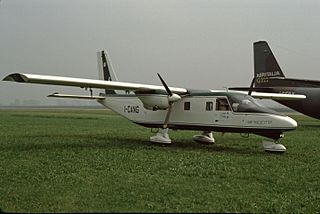
The Vulcanair SF.600 Canguro was a feederliner developed in Italy in the late 1970s. Despite a number of attempts to put the aircraft into series production, only a small number were ever built. The Canguro was a high-wing cantilever monoplane of conventional configuration with a fuselage of rectangular cross-section and a high-set tail. The tricycle undercarriage was not retractable, and its main units were carried on sponsons on the fuselage sides. SIAI Marchetti provided funding towards the construction of the prototype, and constructed this aircraft at the former Aviamilano plant. After flight testing proved positive, the type was put on sale, but failed to attract buyers in any number, even when the original piston engines were exchanged for turboprops and retractable undercarriage was offered as an option.
The Ayres LM200 Loadmaster was a small cargo aircraft developed in the 1990s by Ayres Corporation largely for the needs of small-package carriers. In 1996, urged on by Federal Express, development was begun, designed to carry four demi containers. The aircraft was to be powered by a LHTEC CTP800-4T turboprop, which was composed of two CTP800s driving a single five-bladed Hamilton-Standard propeller through a combining gearbox. To support this development effort, Ayres acquired the LET aircraft manufacturing company in the Czech Republic in September 1998. In 2001, the company was forced into bankruptcy when creditors foreclosed on it, and the Loadmaster program was terminated.
The Tupolev '102' and Tupolev '101' were 1950s projects for a turboprop airliner and assault transport by the Tupolev Design Bureau. The aircraft designs were almost identical but the '101' had a rear loading ramp and tail barbette for two Nudelman-Rikhter NR-23 cannon. The internal arrangement also differed with the '101' cabin being unpressurised apart from the flightdeck and a small cabin for ten passengers, whilst the '102's pressurised cabin was in one section, configured for 40 passengers.
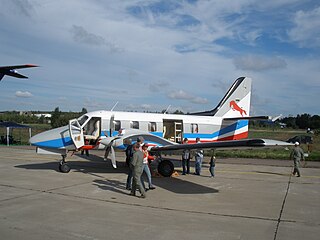
The Technoavia Rysachok is a general purpose, twin turboprop-powered engined light utility aircraft, designed and built in Russia by Technoavia. Certification was expected by 2012 and by autumn 2011 three flight pre-production examples had been completed and flown. As of 2015 the certification process is stalled and Technoavia has declared that it is no longer involved in the project.
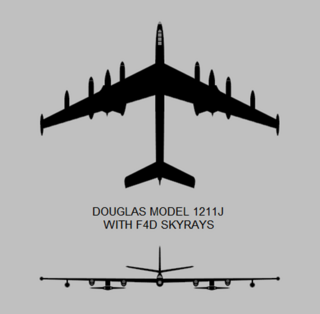
The Douglas 1211-J was a bomber aircraft design developed by American aircraft manufacturer Douglas to compete with the Boeing B-52 design for a major United States Air Force contract between 1946 and 1954. The Model 1211-J design was 160 feet long with a wingspan of 227 feet, and was powered by four turboprop engines. The aircraft was designed around a new 43,000-pound conventional bomb but could carry nuclear weapons as well. It could also carry its own fighter escorts, as parasites under its wings. These fighters' jet engines were to be powered up to assist the carrier bomber during takeoff; refueling of the fighters was to take place while they were stowed on the mothership's underwing pylons.

The CASA 3000 was a proposed turboprop aircraft aimed at the regional airliner market. The project was proposed by Construcciones Aeronáuticas SA (CASA) during the early part of the 1990s.
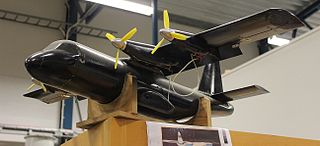
The Saab 107 was a proposed series of small airliners that were intended to be manufactured by Saab AB of Sweden, but were never built.
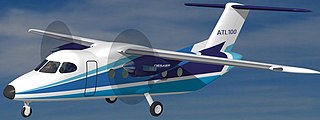
The Desaer ATL-100 is a twin-turboprop, high-wing, utility aircraft under development by Desaer in Brazil and by CEiiA in Portugal.
















